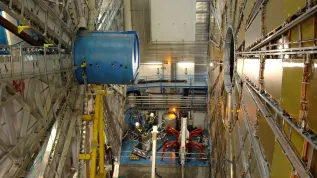
The properties of nanomaterials depend on how these structures vibrate, among other things. Scientists, including a Polish researcher, investigated the vibrations occurring in various types of carbon nanotubes.
Understanding this issue could help produce materials useful in sensors and communication devices.
Carbon nanotubes (CNTs) are carbon structures with a very small diameter (e.g. 100,000 thinner than a human hair). They are like a layer of graphene rolled into a tube. Carbon nanotubes are an interesting material for research: they have unique electrical and mechanical properties, stability and susceptibility to modification.
According to the Faculty of Physics of the Warsaw University of Technology, these nanomaterials can be used as a basic material for the construction of photonic topological insulators, i.e. materials that conduct light in one direction. This can be used, for example, in fibre optic networks (preventing light reflections that would lead to interference and degradation of signal quality).
However, for nanotubes to perform well in practice, their characteristics must be well known. The properties of nanotubes may depend on their diameter, chirality and arrangement in space.
But that is not all. The properties of nanotubes - such as their thermal and electrical conductivity and the dynamics of transitioning into and out of the excited state - also depend on how vibrations run and propagate in these structures.
A team of researchers including Dr. Anna Wróblewska from the Warsaw University of Technology used Raman spectroscopy to investigate the relationship between the vibrational coupling resulting from the homogeneous connection of single-wall carbon nanotubes and the tube diameter. The researchers also examined how collective vibrations changed in this type of structures.
Two configurations were tested: single-walled carbon nanotube coils and a monochiral carbon nanotube film. The results were published in the journal Carbon.
'In the Raman spectrum, low-frequency Raman signals are called breathing modes due to the direction of vibration of carbon atoms, which is perpendicular to the nanotube axis. Our research shows that there are significant differences in this mode for quasi-infinite bundles', says the website of the Faculty of Physics at the Warsaw University of Technology.
This was compared to the single radial breathing mode characteristic for isolated tubes.
The researchers used Raman spectroscopy to check how these vibrations interacted with other properties of the nanotubes. 'Probing with resonant Raman spectroscopy revealed the same resonance energy for both breathing modes in the structures of connected nanotubes. This is crucial when it comes to the optical properties of these structures. It opens new possibilities for using these structures in practice,’ the university says.
The authors of the paper looked at how vibrations would change depending on the diameter of the nanotubes and the architecture of the structure. They confirmed the long-standing predictions of theoreticians. 'The vibrations split less when the nanotubes are larger', they found.
Proving this prediction empirically was extremely difficult until now. The barrier was the production and selection of nanotubes with appropriate parameters.
'Chirally pure nanotube systems represent a new phononic crystal pattern in the THz range, leading to new vibrational modes. Their frequency tunability as a function of tube diameter offers an excellent tool for studying the collective dynamics of a network of coupled oscillators. This opens the way to the field of optomechanics, with promising applications in telecommunication and sensors,’ the researchers say. (PAP)
PAP - Science in Poland
lt/ bar/ kap/
tr. RL













